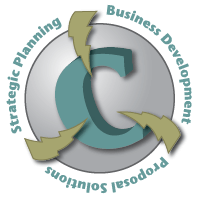The Importance of Planning
Most people subscribe to Winston Churchill’s comment during World War II that “He who fails to plan is planning to fail”. The confusion sets in, however, when planning methods are assessed for potential use and the planner is confronted with multitudinous approaches vying for the planner’s attention. These approaches span the business life cycle from documenting an idea for the marketplace, to revitalizing an operational business to fit a changed environment. The truth is that a business might benefit from many of these approaches given its business maturity and its location in the business development life cycle. Understanding this business maturity is key to selecting workable planning techniques and installing them in an appropriate planning hierarchy.

The implementation of a full hierarchy of planning approaches is key to the understanding of corporate maturity and its use in satisfying customer needs.
- Kyle Rone
Most businesses begin life as an entrepreneurial experiment. They spring from a simple idea, a need to correct something or filling a niche. As new businesses progress, owners focus on immediate problems that demand attention and consider the future only as needed to complete the requirements of a business plan required by the bank to issue the business loan. As the business takes on life one might expect the owner’s attention to turn more to the future. Unfortunately according to Small Business Trends, after two years, 34% of new businesses have failed and, after four years, 56% have failed. The statistics are even worse for the Information Industry at 37% and 63%. With these results it is no wonder that new business owners focus on day-to-day activities and hope that the future takes care of itself.
Once established, businesses usually encounter some need to seek planning approaches as a solution. This may include a need to improve productivity or quality, rapid growth, a desire to franchise, lack of skilled resources, etc. This is an ideal time to perform an enterprise analysis to establish and benchmark the current state of the business. An initial look at the desired enterprise of the future might also be in order at this time. An Enterprise Assessment using the Assessment Infrastructure and Measurement (AIM) approach is performed to establish the maturity level of the current enterprise, process and measurement use, and efficiency of the enterprise.
This state is used as the beginning point for a strategic plan to move from the current enterprise benchmark to the preferred one. It is based on familiar military strategic planning terminology but uses maturity models and measurement models for tracking tactical implementation on a monthly and yearly basis and strategy implementation and goal satisfaction across the strategic horizon. The strategic planning approach is integrated with a business planning model and a project management/program management model to complete the planning hierarchy required for the full scale development maturity level and, later, the operationally ready maturity level.
The planning hierarchy described above is integral to achieving a totally integrated system program and project process model. Entrepreneurial enterprises usually begin by improving the maturity level of the project models from entrepreneurial through full scale development to full scale operations. As the latter maturity level is achieved, they can improve the maturity levels of the program processes building on the project level successes. Companies who have achieved full maturity of the program processes with unique products and customers are then able to quickly reestablish them with new products and customers. The implementation of a full hierarchy of planning approaches is key to the understanding of corporate maturity and its use in satisfying customer needs.

